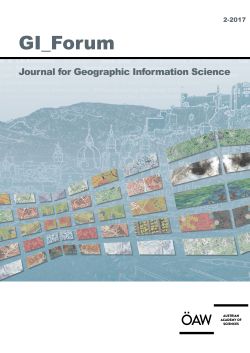
GI_Forum 2017, Volume 5, Issue 2, pp. 137-151, 2017/12/13
Journal for Geographic Information Science

The ever-increasing popularity of bike-sharing schemes has added an additional mode to the transport regime in many cities. The data produced by lending and returning bicycles at geographically diverse stations has stimulated numerous studies. We focus on the City of Vienna bike-sharing system (CityBike Wien; CBW) and its relationship with the public transport system, asking whether bike-sharing serves as competitor, relief or supplement. We approach the question by surveying the total CityBike Wien trip data from 2015 – about 1 million records. We cleanse and route all bicycle trips and compare them with routed alternative public transport (PT) journeys in terms of travel time ratios and detour factors. After calculating and plotting the cumulative frequencies of travel times and distances of both modes of transport as well as comparing the current PT and CBW usage levels, we conclude that CityBike functions as a supplement to Vienna’s public transport.
Keywords: bike-sharing, public transport, mapping, travel time ratio, detour factor